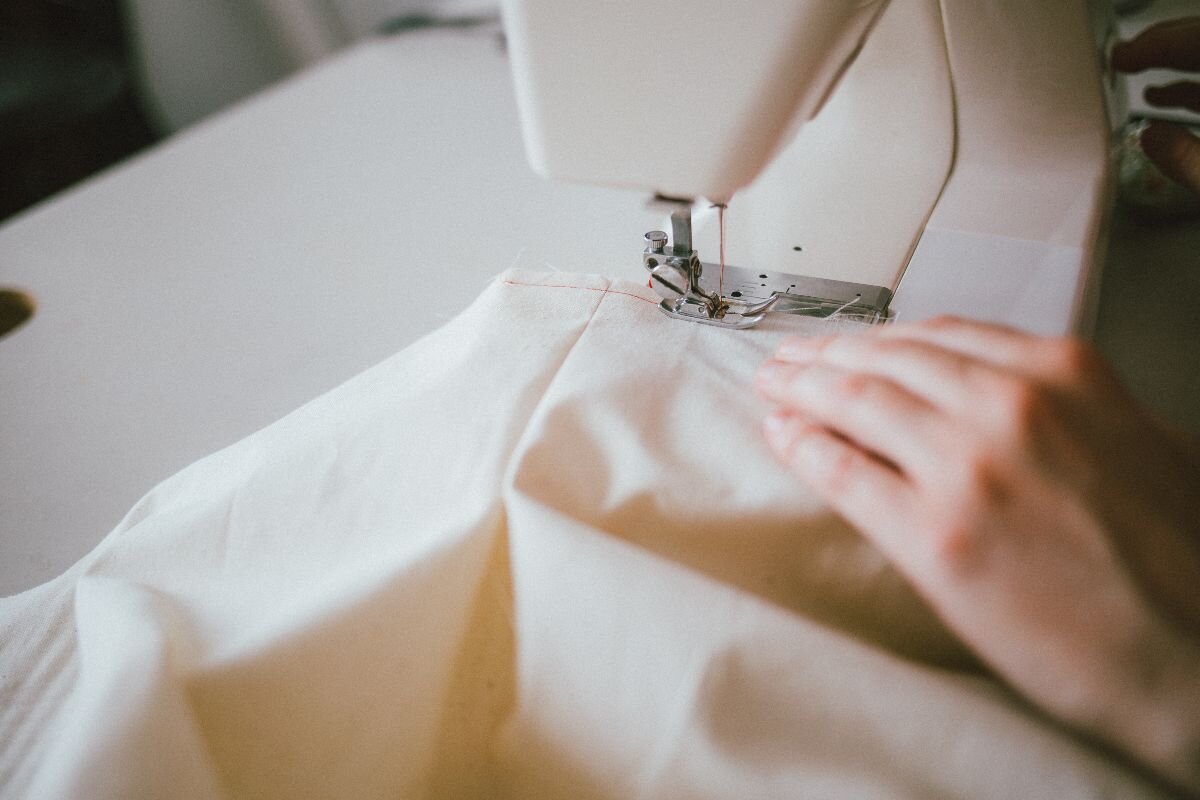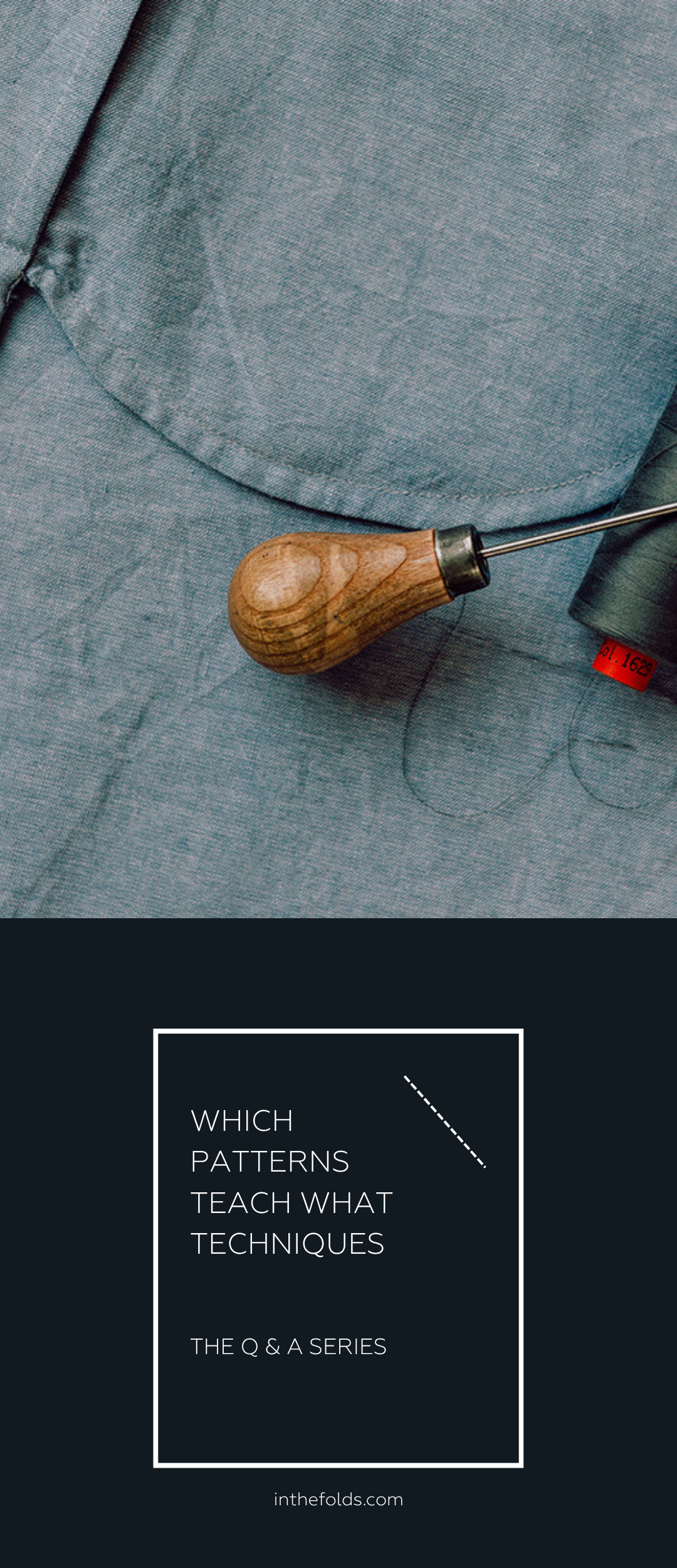Hello,
I read your article about seam allowances and have a follow up question. Since there are so many new indie pattern designers there is the need to pay special attention to the main part of the garment seam allowance. They are all over the place! Some patterns stick to the standard 5/8'' and I have some that are as small as 1cm.
How do you determine that measurement and why such a drastic difference in so many companies?
Thanks!
Lorie
Hi Lorie,
Thank you for getting in touch and your follow-up to the post we wrote about seam allowances.
WHY YOU HAVE DIFFERENT SEAM ALLOWANCES
1. The location of the seam. For example, larger seam allowances are normally required for the centre back and side seams of a garment. This provides strength as well as space for closures, such as zips.
Smaller seam allowances are required for curved seams such as armholes and necklines, as sewing a curve with a large seam allowance can lead to inaccuracies and the fabric puckering.
2. The other thing we consider when selecting seam allowances is the recommended fabric for a garment, and how we suggest sewists finish the seams in the particular pattern. For example, if you are making a silk chiffon top, it is best to use a narrow seam allowance, so you are not left with bulky seams that show through the fabric on the right side. A silk chiffon top is a delicate piece of clothing, that is not worn everyday and is normally hand washed, so it can afford to have smaller seam allowances. If you are making a pair of pants or a coat, you need seams that are stronger (particularly in places where tension is put on the seams - such as the crotch of pants) and therefore need a seam allowance that is wider than what you would use for a chiffon top.
IN THE FOLDS SEAM ALLOWANCES
In saying that, we have specific seam allowances we use here at In the Folds so that there is consistency between our patterns. They are:
Main seams (shoulder seams, side seams etc.) - 1.2cm (1/2in)
Armholes and sleeve caps - 1.2cm (1/2in)
Necklines and armholes finished with facings / binding, pocket bag edges - 1cm (3/8in)
Centre back seam with a zip - 2cm (3/4in)
Hem allowance will range and will depend on the pattern
As you can see, when using one of our patterns, the majority of seams will be 1.2cm (1/2in) and when you get to finishing armholes and necklines, our seam allowances reduce to 1cm (3/8in).
DIFFERING SEAM ALLOWANCE BETWEEN DESIGNERS
For the second part of your question, I'd say the range of differing seam allowances between designers comes down to factors such as the location of designers and personal preferences. What is preferred and taught can also change over time, so this may also lead to the differences. There is not consistency in fashion education between countries, so many patternmakers are likely just using the seam allowances they were taught. Other designers, who may not have studied fashion, may have chosen the seam allowances they like to use in their own projects.
I finished my fashion and textiles degree 10 years ago and recently started teaching first year patternmaking at the same university I went to. I was surprised to see that some of the preferred seam allowances had changed in that time. When I was taught, we used a range of seam allowances and their use depended on the seam. Now, we are teaching students to use 1.2cm (1/2in) for all seams, except for armholes / necklines that will be faced or bagged out, and then it reduces to 6mm (1/4in). Neither method is incorrect, it is just a different approach. This is the same when you compare seam allowances between companies. Some companies favour the more industrial seam allowances - such as Style Arc or Tessuti. Other companies will be more generous with their seam allowances as they may think it's more beginner friendly.
When I started In the Folds I planned to use 6mm (1/4in) seam allowance for necklines and armholes that would be faced / bound, like I had been taught at university. The pattern testers did not like this! So I decided to increase it to 1cm (3/8in) as I thought it would be less daunting for makers, and for those that want it to be 6mm (1/4in), they can always trim it back.
WHEN SEAM ALLOWANCE VARIES
If you are worried about mixing up seam allowances between patterns, I'd suggest looking at the pattern or instructions to see if you can work out the way seam allowances have been added. Write it on a post-it and stick it to your machine while you sew the garment. This way you can just relax into it, without feeling like you need to check the seam allowance on every step. For example, if using one of our patterns, I'd suggest writing - 'Main seams 1.2cm (1/2in), bagged out areas 1cm (3/8in).' I'd also suggest only writing the measurement format you use - for example, I work in centimetres, so I would not write the inches measurement on my post-it. When you're done, you can stick it to the pattern so that you have it ready to go the next time you use the pattern.
I hope that helps!
Happy sewing,
Emily
resources mentioned in this issue
The Q&A series - Sewing seam allowance - can be found here.
P.S. Would you like to know what the Q & A series is all about? This page tells you a little bit more about the motive behind the series. Past issues from the Q & A series can be found here.
Don't have a question, but found this newsletter helpful? I'd love to hear from you! Get in touch and say hi.
What you’ve been making
Acton dress made by @trippja
Collins top made by @sewtogrow













